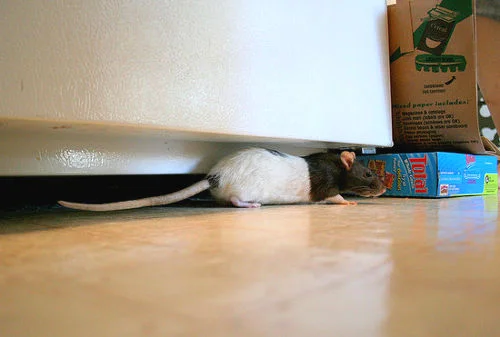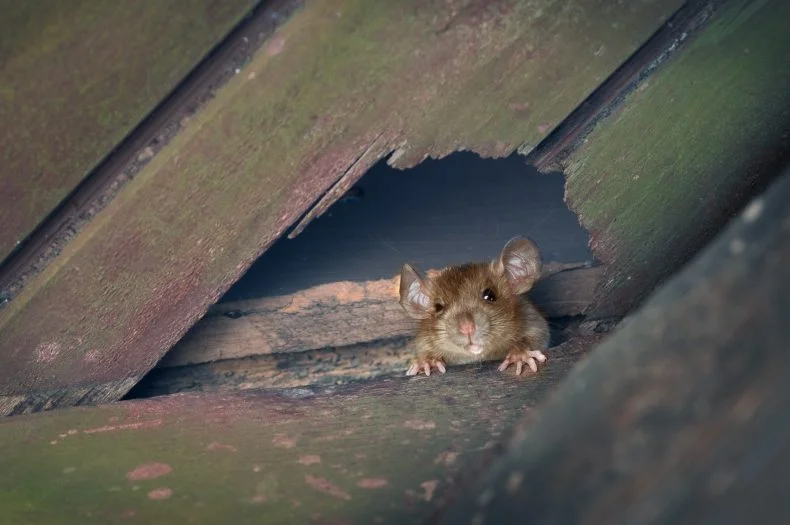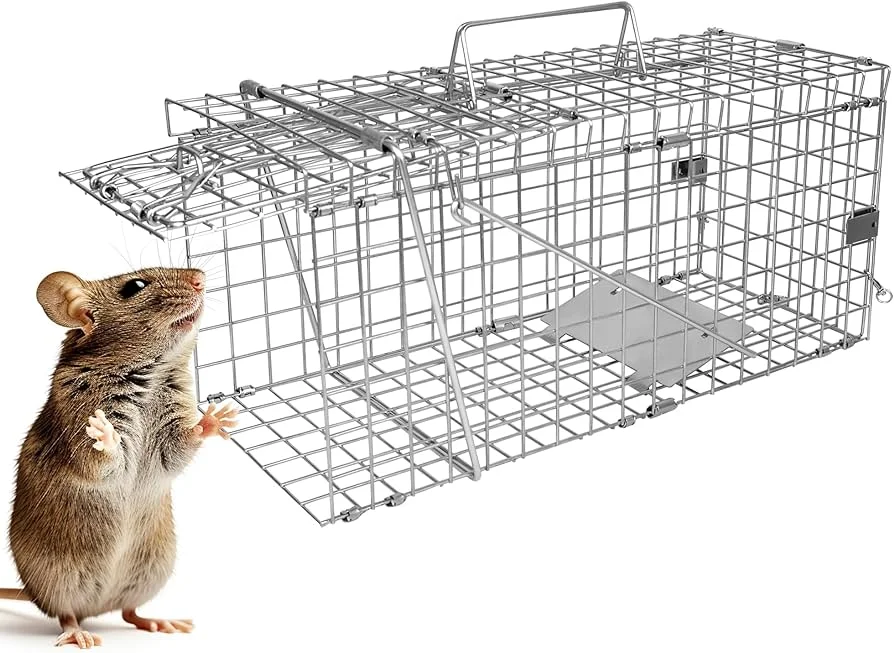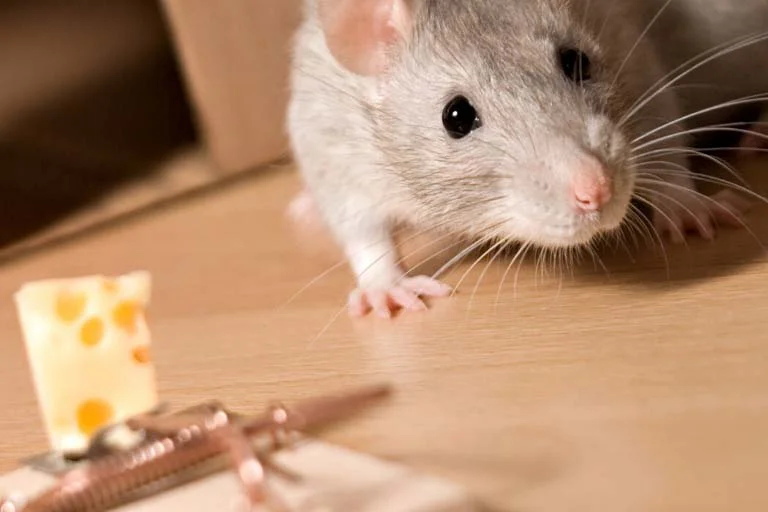
Being one of the most common pets that a house can get, Rats can create a nuisance by damaging property, contaminating food, and spreading diseases. It's very common that at some point in time homeowners can encounter a rat infestation in their house, especially during the colder months when these rodents seek shelter indoors. If you suspect that your house has been invaded by rats, it is crucial to take immediate action to prevent the problem from escalating.

The first step in dealing with a rat infestation is to identify the signs of their presence. These may include droppings, gnaw marks, grease marks, and urine stains. Once you have confirmed the presence of rats in your house, it is time to take measures to catch them. However, catching rats in the house can be a challenging task, as these rodents are intelligent and can quickly adapt to new environments.In the next blog, we’re gonna provide you with some tips on how to catch a rat in the house effectively.
There are two common types of rats that are found in homes - the Norway rat and the roof rat. The Norway rat is larger and tends to burrow in the ground, while the roof rat is smaller and is known for climbing trees and entering homes through the roof. Knowing which type of rat is present in the home can help in selecting the right trap and bait to use.
Rats are opportunistic eaters and will consume anything: fruits, vegetables, meat, grains and more. They are attracted to food that is easily accessible, remember that storing the food in airtight containers and keeping the kitchen clean. Additionally, rats are known to drink water from leaky pipes and faucets, so fixing any leaks can help deter them from entering the home.
Rats can enter through various ways, like small openings, some of these are gaps in foundations or cracks in walls. They are also known to climb up drain pipes and enter through the roof. To prevent rats from entering the home, it is important to seal any openings and use wire mesh to cover vents and other openings.
Understanding rat behavior is key to effectively capturing them. By selecting the right trap and bait, and taking steps to prevent rats from entering the home, homeowners can successfully rid their homes of these unwanted pests.
Rats can be deterred from entering a house by removing their food sources, sealing entry points, and reducing clutter. Here are some ways to deter rats from entering your home.
Rats are attracted to food sources, so it is important to keep the house clean and free of food debris. Remember to clean the crumbs or spills immediately and store food in airtight containers. Always keep the trash closed tightly and get rid of garbage regularly. Avoid leaving pet food out overnight and clean up any spilled birdseed or other pet food.

Rats can enter a house through small openings, so it is important to seal any entry points. Look for the gaps on the doors, windows, and pipes and seal them with caulking or weather stripping. Make sure that screens on windows and vents are in good condition and free of holes. Install door sweeps to prevent rats from entering under doors.
Rats like to hide in clutter, so it is important to reduce clutter in the house. Keep storage areas organized and clean. Avoid storing items on the floor or against walls, as rats can hide behind them. Don’t forget to keep your area always cleaned and free from debris such as piles of leaves or wood.
By following these tips, you can deter rats from entering your home and prevent infestations. If you suspect that rats have already entered your house, it is important to take action immediately to remove them.
Rats can be a nuisance in the house, and trapping them is an effective way to eliminate them. Here are some tips on how to trap rats.
There are different types of traps available for catching rats. These include snap traps, glue traps, and live traps. The most common is the snap trap which are designed to kill the rat instantly. Another common trap are the glue traps, which are effective but inhumane as they cause the rat to die a slow death. Live traps are designed to catch the rat alive and allow for safe disposal of the rat.
To set the trap, it is important to identify the areas where the rat is most active. These areas include near food sources, along walls, and in the corners of rooms. Place the trap in these areas and ensure that it is stable and secure. For snap traps, it is important to bait the trap with a food source that the rat is attracted to. Some foods like Peanut butter, bacon, hams oe cheeses, are popular to use as bait and attract rats to the traps.
When selecting bait, it is important to choose a food source that the rat is attracted to. Thanks to their sense of smell, rats are very keen and easily attracted to strong-smelling foods. Peanut butter, cheese, and bacon are popular bait options. Note that in order for these traps to be more effective, having a fresh bait will be more appealing to the rat.
When disposing of the dead rat, it is important to do so safely. Using a plastic bag and wearing gloves to puck up the dead animal. Double bag the rat and dispose of it in the trash. Remember that afterwards you must disinfect the area where the rat was caught to eliminate any lingering odors or bacteria.
By following these tips, trapping rats can be an effective way to eliminate them from the house.
When dealing with a rat infestation in your property, it's important to handle the situation humanely. There are several options available for removing rats without resorting to harmful methods like poison. The following subsections will cover two effective methods for humanely catching and releasing rats.

Live traps are a popular option for catching rats without harming them. These traps work by luring the rat inside with bait and then trapping it inside a cage. These types of traps can be found easily on most hardware stores or online. When placing a live trap its most important to set it up in a place where the rats are known to pass or frequent. Peanut butter, cheese, or bacon are all effective baits for live traps.
Once the rat is caught, it's important to release the animal far away from the property, this is a preventive measure for them to return to your property. It's also important to release the rat in an area where it will not cause harm to other people or animals. Remember to wear gloves when handling the trap to prevent the spread of disease.
When releasing rats, it's important to do so in a way that ensures their survival. Rats are social animals and should be released in groups to increase their chances of survival. It's also important to release them in an area where they can find food and shelter.
If you are unable to release the rats yourself, there are organizations that specialize in humane rat removal. These organizations will trap and release rats for you, ensuring that they are released in a safe and humane manner.
In conclusion, catching and releasing rats humanely is an effective way to control a rat problem without resorting to harmful methods. Live traps and releasing rats in groups are both effective options for removing rats from your property. Remember to always handle rats with care and wear gloves to prevent the spread of disease.
Preventing a rat infestation is the optimal way to keep your home safe, and also to not get a bigger problem in your home. There’s multiple ways in which you can prevent the rats from entering a property, including sanitation, regular inspections, and exclusion.
Keeping a property clean and debris free is the main step into prevention of a rat infestation. Rats are attracted to areas with food and water sources, so it is important to keep the kitchen and other areas free of crumbs and spills.Proper storage of garbage in sealed containers and getting rid of it regularly is also a step into prevention of infestation. Pet food should also be stored in airtight containers.
Regular inspections of a property can help identify any potential entry points for rats. Cracks and holes in walls, floors, and foundations should be sealed to prevent rats from entering. Inspecting the roof for any damage or gaps is also important, as rats can enter through the attic.
Exclusion is sealing off potential entry points for rats to enter. This can include sealing gaps around pipes, vents, and windows with steel wool or other materials that rats cannot chew through. Door sweeps and weather stripping can be a way to prevent rats from entering the property.
Using electronic devices or poison is not always the best option for controlling a rat population, as it can be harmful to other animals and the environment. Prevention is the most effective method for keeping rats out of a property.

Catching a rat in your home can be an anxious feeling task, but with patience and the right mindset and approach, it can be done effectively. The following tips can help you control a rat infestation in your property:
For more information on how to catch a rat in the house, you can find a plethora of resources whether you look online or in books. Some recommended options include:
Remember, the most important thing is to act quickly when you suspect a rat problem. Take the right steps and use the right method, you can effectively control the rat population in your home and prevent future infestations. If you need professionals to take over, at Critter Stop we are ready to pick up your call! We have provided our rat removal services hundreds of times in DFW, contact us at (214) 234-2616 to get rid of rats today!
The most effective type of rat trap for indoor use is the snap trap. These traps are designed to kill rats instantly, and they are easy to set up. Snap traps are also very affordable and can be found at most hardware stores.
Yes, a live trap can be used to capture rats alive. These traps are designed to allow rats to enter but not exit. Once a rat is caught, it can be released outside of the home. Keep in mind that live trapping can be more difficult than using snap traps, and it may take longer to catch the rat.
To capture a rat, you can use a live trap baited with food such as peanut butter, cheese, or fruits. Place the trap in an area where rats are frequently seen or where you find droppings. Check the trap regularly, and once captured, release the rat far away from your home to prevent it from returning. Ensure you wear gloves to avoid direct contact and wash your hands thoroughly afterward.
The best bait to use for outdoor rat trapping is peanut butter. Rats love the smell and taste of peanut butter, and it is easy to apply to the trap. Other effective baits include bacon, cheese, and dried fruit.
Rats may avoid traps if they have been previously caught or if they are suspicious of new objects in their environment. To overcome this, try placing unset traps in the rat's path for a few days before setting them. This will allow the rat to get used to the traps and feel more comfortable around them.
To catch a rat that avoids traps, you should diversify your approach by experimenting with different types of traps, such as live, glue, or electronic traps, and vary the bait with enticing options like bacon, chocolate, or wet pet food. Pre-baiting the traps without setting them can help the rat grow accustomed to feeding from them, increasing the chances of capture. It's also crucial to reposition traps to the rat's frequent pathways while wearing gloves to mask human scent and ensure no alternative food sources are available, making the trap the most appealing option.
To coax a rat out of hiding, try placing bait near the entrance of the hiding spot. This will encourage the rat to come out and investigate. You can also try placing traps in the rat's path or using a live trap with a one-way door.
The expected timeframe for successfully trapping a rat inside the home can vary depending on the size of the infestation and the effectiveness of the trapping methods used. This can take a couple of days or weeks to catch all of the rats. Remember to stay patient and persist in your trapping efforts.
Visit our Critter Library and learn more about our furry friends